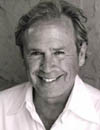Food as Medicine
What You Eat Affects Your Health
Medical doctor and best-selling author John La Puma (The Real Age Diet) is fond of quoting Yogi Berra (who isn’t?): “When you see a fork in the road, take it.”
This Yogism has special meaning for the good doctor. He not only took a different direction when he found his fork in the road (from traditional medical practice and research), he picked up that fork and realized all of the health and medicinal benefits of food. He is now nationally known as “Chef MD” (seen weekly on Lifetime cable channel) and a New York Times best-selling author (The Real Age Diet).

The culmination of his “fork in the road” was published this month as Chef MD’s Big Book of Culinary Medicine. In this information-packed book, La Puma details 40 major illnesses and what foods to eat to increase or decrease to prevent or even treat these conditions. He makes the bold but scientifically supportable claim that 70 percent of heart attacks are preventable with dietary changes. As an example: Eating a handful of walnuts 20 minutes before eating a fatty meal such as steak and pasta can prepare us for avoiding the artery-clogging effects by making the arteries smoother and more elastic.
In a recent conversation, Dr. La Puma told me: “I was able to identify three aspects of how we eat that, if attended to, will not only bring our weight naturally into line, but even create medicinal benefits for a large number of illnesses.”
Those three principles are as follows:
1. Bioavailability. This principle deals with the importance of getting the most potent nutrient benefit from anything we put into our mouths. La Puma offered these examples: If you cook pizza at 450 degrees for seven minutes instead of 350 degrees for 14 minutes, you can double the antioxidant availability in the crust. If you eat watermelon at room temperature instead of ice cold, you will absorb 40 percent more of the important free-radical squelcher lycopene.
2. Satiety. This principle is obviously important for anyone trying to restrict their calorie intake. The more bang for our buck-or calorie-the food provides, the less of it we need. Not all foods are created equal when it comes to satiating our hunger. For example, La Puma points out that protein is a potent satiator. It will remain the longest in the stomach, over four hours, even when the calories are fewer than other non-protein foods. Even the way we eat our food can make a difference. Eating cold instead of warm pasta salad will satisfy our hunger quicker because you get the more satiating “resistant starch” in the cold version. The cold starch also releases a hormone called PYY, which tells our brains that we are full.
3. Anti-nutrients. There are many foods that are bad for us, that actually work against our best health interests, and there are many ways we prepare our foods that can rob them of their nutritional benefits. La Puma cites the common example of picking up a cooked chicken breast in a plastic-wrapped container from the market and then popping it into the microwave, shrink-wrap and all. With any food with oil in it, the plastic will be absorbed into the food through the oil when it is heated, La Puma said. La Puma cites research that shows that cloves reduce the bacteria of E. coli by more than 99 percent. If cinnamon is more to your liking, it can knock out the dastardly bacteria by a respectable 80 percent.



